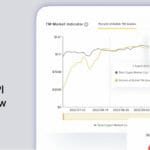Key Takeaways:
- The US Federal Reserve released meeting details that show an inflated $9 trillion balance sheet.
- It is believed to be caused by trillions of dollars in government spending (Treasury and fiscal policy)
- The Fed’s liquidity paradigm change will be complex and fluid in nature.
The minutes of the Federal Reserve’s March 15-16 policy meeting were released on Wednesday, sparking much debate about the central bank’s plans to cut its inflated $9 trillion balance sheet. There will undoubtedly be consequences for the financial sector, but what those consequences will be cannot be determined with sufficient certainty at this time. It will undoubtedly take time.
The Fed cannot be responsible for everything. Even so, the central bank is not solely to blame for the current inflation. This was predominantly caused by trillions of dollars in government spending (Treasury and fiscal policy) as well as the intricate mess of supply-chain obstacles during the pandemic.
A concise plan has not yet been announced to fix this error, and even if one is in place, changes in the size, pace, and balance of passive (maturities) and active (sales) runoffs are possible. And the consequences of such a plan are highlighted by the fact that the Fed will be increasing interest rates at the same time.
A limited examination of the implications of quantitative tightening reveals the complex and fluid nature of the Fed’s liquidity paradigm change. While there are still a lot of unknowns, there are certain apparent lessons at this point: The Fed’s balance sheet reduction is expected to have significant consequences; the basic outlines of where the impacts will be felt are evident, but the precise scale and timing are difficult to predict at this time.








